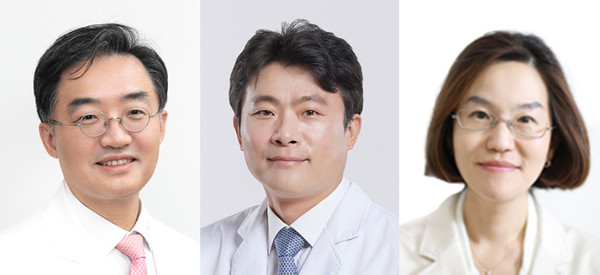A joint research team of professors at three hospitals has developed an algorithm that effectively controls blood sugar levels in type 2 diabetes patients.

Diabetes has two main categories -- type 1, in which insulin-secreting cells are destroyed, and insulin is not secreted, and type 2, in which insulin is secreted but has problems in quantity or action.
Unlike type 2 diabetes, which patients can manage with lifestyle modification, type 1 or severe type 2 diabetes requires insulin treatment and injections several times a day. However, the treatment of type 1 or severe type 2 diabetes has undergone innovation with the advent of a continuous blood glucose meter that attaches to the body and measures blood sugar in real time. The device can automatically measure blood sugar while eating or sleeping, which is very useful for blood sugar control.
However, in general type 2 diabetes patients who receive insulin injections only once a day or not at all, the efficacy and stability of the continuous glucose meter have limitations, and the training for interpreting and applying the device's blood glucose data is difficult.
The team -- led by Professors Cho Young-min at Seoul National University Hospital, Won Jong-chul at Inje University Sanggye Paik Hospital, and Rhee Eun-jung at Kangbuk Samsung Hospital -- developed the “Self-Evaluation Of Unhealthy foods by Looking at postprandial glucose” (SEOUL) algorithm, which allows patients to evaluate unhealthy foods by visually checking blood glucose after meals to easily interpret and apply the data from the continuous blood glucose meter.
The SEOUL algorithm evaluates only two points; is the food generally known to be good for health, and did the patient's blood sugar rise significantly after eating the food? Patients can make all evaluations subjectively according to their common sense.
By following this simple algorithm, patients can eat a healthy diet at an appropriate blood sugar level and avoid unhealthy meals that cause postprandial blood sugar rises.
In a follow-up study, the research team equally divided 126 type 2 diabetes patients into groups using the SEOUL algorithm and continuous blood glucose meter and groups not using the algorithm or continuous blood glucose meter. They then asked the groups to measure their blood sugar for 12 weeks.
As a result of comparing the two groups after 12 weeks, the mean glycated hemoglobin (HbA1c) level decreased significantly in the continuous glucometer group (-0.6 percent) than the control group (-0.1 percent).
The rate of achieving the goal of glycemic control by reaching the glycated hemoglobin level of less than 7 percent was also significantly higher in the continuous glucose meter group (24.1 percent) than in the control group (8.1 percent).
"As there were no patients with an increased risk of hyperglycemia or hypoglycemia among the SEOUL algorithm users, we confirmed the safety of using a continuous blood glucose meter in a patient-led way," Professor Cho said. "That scientifically supported the guidelines of the Korean Diabetes Association and reaffirmed the importance of patient-centered lifestyle management in the treatment of diabetes."
The research result was published in the online edition of Diabetes Care on Aug. 20.

